
Something that can be very helpful when you are designing and refining your website is knowing what it “looks like” to the bots that crawl the web and index your pages. If your site doesn’t have the information that the bots need to know what your content and graphics are all about, then they can’t do a very good job indexing your pages.
If you use Firefox, you can download and install the “User Agent Switcher” option for Firefox. You’ll have to restart Firefox once you’ve installed it. Once you have it, in Firefox, go to Tools, then User Agent Switcher, then Options, then Options again. In the User Agent Switcher window that comes up, select User Agents and click on “Add.”
In the Description box, type something like “Google Bot” and in the User Agent box, paste this:
Mozilla/5.0 (compatible; Googlebot/2.1; +http://www.google.com/bot.html)
In the App Name box type Googlebot, then click OK. Now, any time you want to view one of your pages as if you were the Google bot, you go to Tools, User Agent Switcher, Googlebot.
You might have to block cookies to view some sites, and you can do this in Tools, Options, Privacy, Exceptions (then add the URL).
Another thing you can do is to use a text browser like Lynx to get a rough estimate as to how your site looks to Google. Google Webmaster Tools, however, has a feature that can help too. On the Webmaster Tools dashboard, click on the “+” sign by the “Labs” link in the left hand column. When you do, you’ll see an option called “Fetch as Googlebot” as you can see in the first screen shot. Click on it, and it will download your site (or whatever URL you enter) as the Googlebot sees it.

As in the second screen shot, you’ll see the html source just like that you’ll see when you click on “View Source” in your browser. You’ll get a response code, like 200, which means everything is peachy, or 301, which means “permanent redirect.” You’ll see what kind of server your website is on and any CSS files or scripts that are called upon and included.
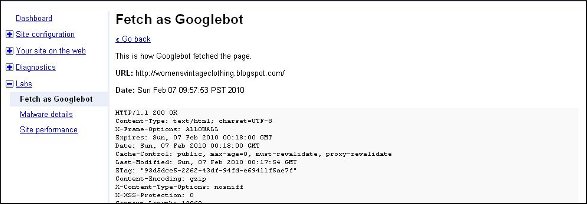
One caveat, however is that it doesn’t always work with PDF files, but Google insists it’s working on fixing the problem and if your sites look OK in your browser, chances are it looks OK to the Googlebot (even if it’s PDF).
If you run a lot of scripts or have lots of layers on your sites, this can be particularly handy. If your site is mostly simple html, your normal web browser will give you a pretty good idea of what Google sees on your site.
 When the Googlebot crawls your site, it uses computer algorithms to determine which sites to crawl, how often to crawl them, and how many pages to get from each site. It starts with a list of URLs from earlier crawls and with sitemap data. The bot notes changes to existing sites, new sites, and dead links for the Google index. When the Googlebot processes each page it takes in content tags and things like ALT attributes and title tags. Googlebot can process a lot of content types, but not all. It cannot process contents of some dynamic pages or rich media files.
When the Googlebot crawls your site, it uses computer algorithms to determine which sites to crawl, how often to crawl them, and how many pages to get from each site. It starts with a list of URLs from earlier crawls and with sitemap data. The bot notes changes to existing sites, new sites, and dead links for the Google index. When the Googlebot processes each page it takes in content tags and things like ALT attributes and title tags. Googlebot can process a lot of content types, but not all. It cannot process contents of some dynamic pages or rich media files.
There has been plenty of talk about how to handle Flash on your site. Googlebot doesn’t cope well with Flash content and links that are contained within Flash elements. Google has made no secret about its dislike for Flash content, saying that it is too user-unfriendly and doesn’t render on devices like PDAs and phones.
You do have some options, however, such as replacing Flash elements with something more accessible like CSS/DHTML. Web design using “progressive enhancement,” where the site’s designs are layered, yet concatenated, will allow all users including the search bots to access content and functions. Amazon has a “Create your Own Ring” tool for designing engagement rings that is a good example of this type of functionality. Also, something called sIFR, or Scalable Inman Flash Replacement is an image replacement technique that uses CSS, Flash, or JavaScript to display any font in existence, even if it isn’t on the user’s computer, as long as the user can display Flash. Now, sIFR is officially approved by Google.
Google says that the bottom line is to show your users and Googlebot the same thing. Otherwise your site could look suspicious to the search algorithms. This rule takes care of a lot of potential problems, like the use of JavaScript redirects, cloaking, doorway pages, and hidden text, which Google strongly dislikes.
Google support engineers say that Google looks at the content inside “noscript” tags, but they should accurately reflect the Flash-based content included in the noscript tags, or else Googlebot may think it’s cloaking.
According to Google engineer Matt Cutts, it’s difficult to pull text from a Flash file, but they can do a fair job of it. They use the Search Engine SDK tool that comes from Adobe / Macromedia. Most search engines are expected to make that the standard for pulling text out of Flash graphics. People who regularly use Flash might consider getting that tool as well and seeing for themselves what kind of text it pulls out of your graphics. In fact, Google may work with Adobe on updates to the tool.
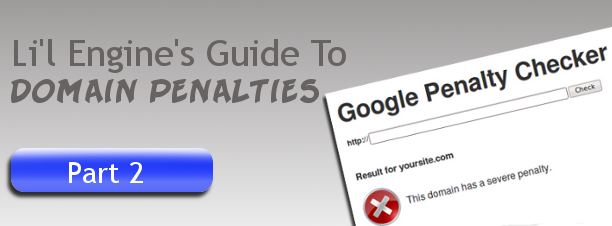
In Part I, we talked about how to determine if your site has been banned or penalized by Google and what to do about it. This part delves more into Google penalty folklore, and how the search engine is constantly changing and evolving to counter nefarious work-arounds that people develop to game the search engine world.
In August and September 2009, Google made changes that demote a site by 50 places in the rankings if you are penalized. At this time, variation of anchor texts grew in importance even more than it had in previous years. The “rules” of building natural anchor text change a lot. Not that you should stop using natural anchor text. More on that later.

The so-called “minus 50 penalty,” a filter in Google operates on the domain, page, and keyword level. In other words, pages drop by 50 positions in the ranking because of over-optimization of keywords the page has been linked to, either internally or externally.
What does this mean? Un-optimize your keywords?
Actually, yes.
Since the moods of Google change fairly rapidly, the things that worked last year may not work now. If you’re hit with a penalty, all you can do is fix the problem, suck it up, and move on starting today. Various webmasters have said that it takes 60 days to get rid of the penalty, so the sooner you deal with it the better.
Something else you must do is change up your anchor texts. Don’t just use one hot keyword to link all your links. And you can’t just vary them singular and plural. You have to use everything from natural language phrases to pieces of keyword phrases to misspellings and typos. What you don’t want is to overdo the linking with the hot keywords and phrases. Write your anchor texts as if you don’t care about squeezing every last bit of juice out of a particular keyword or phrase.
When it comes to anchor text variety, your best bet for figuring it out is to check out what your best competitors are doing because there’s no exact number of times a keyword text can be used to anchor links. The key is not to be too far out of line when compared to your competition.
Page level penalties are becoming more common, whereas before, penalties were usually applied at the domain level. In many cases the page level penalties are hitting home pages of sites. Key phrase specific penalties are becoming more common too. This happens when there are easily detected paid links pointing to a page with exact anchor text for one key phrase. The problem is, the page can continue to get search traffic for some phrases, but not the one you want.
Apparently the reason Google does it this way is that sometimes Google susses out paid links, and sometimes it doesn’t. If the algorithm is going to hand out penalties for paid links, it needs to prevent itself from messing things up for a site too badly if the algorithm thinks there are paid links when there aren’t. Therefore, they limit the penalty to one specific page and one specific key phrase so that an entire site isn’t penalized in the even to of a mistakenly applied penalty. Of course, the best thing to do if you have paid links is get rid of them and wait for your site to be crawled again.
These page level and key phrase specific penalties are sometimes hard to detect, but there are some things you can do that might give you clues that your site is on the receiving end of a page level key phrase specific penalty.
The moral of this long story is that while domain level penalties appear to have peaked, you have to watch out for page level and keyword specific penalties. While Google’s intentions in doing this were probably honorable, these penalties can be a little harder to figure out than domain level problems, particularly keyword and key phrase level penalties. If you have paid links, shady links, or happen to link to a nice looking site that itself has questionable link issues, you need to fix these things now. It isn’t always easy finding out which of the sites you link to themselves link to porn or other dodgy sites, but it’s worth checking out. The bottom line is that if you shun all questionable practices, build links organically, and continue to provide fresh, relevant content with natural sounding anchor text for links, your site will bubble upward and is almost certain to resist getting penalized.
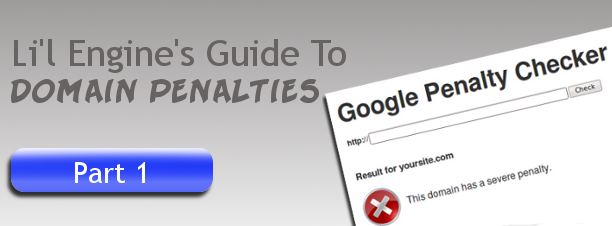
Has your website’s search engine ranking dropped drastically for no apparent reason? It is possible that your site has been hit by a domain level penalty from Google’s web spam team. A domain level penalty means your whole site has been demoted drastically in the search engine rankings – not just certain pages of it. The bad news is this can be difficult to pin down. While there are tools to help you figure out if your site has been penalized, there is a degree of speculation about it.
When your site’s Google search engine ranking takes a hit suddenly, then you can pretty easily conclude that you have done something wrong in the opinion of Google. They’re not all that specific about what happens when they “catch” you doing something wrong, and exactly how they penalize you. But in general, there are a few categories into which these mistakes fall, and there are ways to make a reasonable conclusion about which sin you’ve committed.
Cataloging the various Google penalties people have come across is like trying to herd cats. Whatever relationship exists between the punishment and the crime either isn’t transparent, or is not handled evenly across the board. Being banned is, of course, as bad as it gets, since your site is suddenly not able to be found. This usually only happens when some kind of serious deception is going on on the site. But there are a few activities that have been pinned down as sending the Google gods into a frenzy.
Domain level redundancy is one thing that can get you penalized. This is what happens when webmasters clone sites. In other words, they point the Domain Name System (DNS) from several domains into the same directory. This makes each domain display exactly the same site.
If you duplicate the same content over several pages or sites, or if someone copies your site or content, Google will ding you for content redundancy. If you think someone else is ripping off your content, check Copyscape and see if you can track it down.
Purchasing a number of domains, each of which address separate keyword targets is now considered punishable.
If Google thinks you’re a link seller, your links will rapidly mean zilch. If your links do not pass on PageRank juice, they’re worth less than the pixels they’re written on, even if you are using them on your own site.
There is a certain amount of mystery surrounding the Google “sandbox” theory. Some people believe that young sites are penalized. You don’t see this penalty unless you try to SEO the heck out of it within the first few months of the site’s existence. Apparently there is a certain amount of dues paying your site has to do before your SEO starts getting respect from the big guys.
Does your site support (or appear to support) porn, gambling, or “male enhancement” sites? Well, duh. Of course you’re going to get penalized. Same with spam.
If your site may be perceived as a threat to national security, like if you sell fake IDs or something, your site will be penalized. If a third party hijacks your search engine rankings by means of cloaking and proxy, unfortunately, your site gets hit with a penalty. This one is mostly Google’s fault. The same is true if an affiliate uses content from your site, or if your competitor intentionally links to you from “bad neighborhood” (porn, gambling, etc.) sites.
And, of course, there’s the fact that the Google algorithm isn’t perfect. Algorithm quirks can have the same effect as a penalty if it makes your site unreachable.
If you want to find out if your site has been penalized, we have a free penalty checker tool you can use if you go to http://tools.lilengine.com/penaltychecker/. Click the button below to give it a try.
You just input the address of the site you want to check out, and you’ll get a result either like screen shot one (when a site does appear to have been banned or penalized) or screen shot two (when a site is not believed to have been penalized).
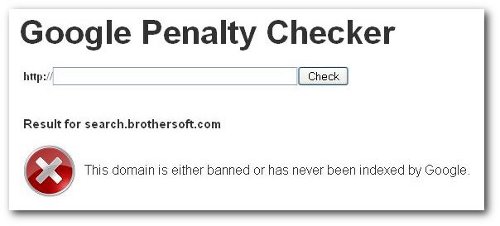
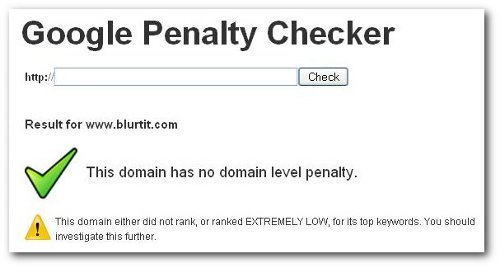
If you suspect your site has been penalized, there are a number of steps you can take to find out if it has, and why. Once you fix the problems, you can request re-instatement by the Google search engine and eventually get back in its good graces.

On Jan 27, Google promoted its social searching algorithm from the laboratory to “beta,” which means it’s now a regular search option. Reactions so far are mixed. Social searching has been praised by those who care what their friends on Twitter think of the new iPad, and criticized by those who wonder how anyone could care what their Twitter friends thinks of the iPad.
To partake of this new morsel on Google’s search buffet, you need to sign into your Google account and update your Google profile to include links to your accounts on social sites like Twitter and Facebook. But the Facebook link is a little deceptive. The only thing Google can index from Facebook are the public parts of people’s profiles. There isn’t a way for Facebook users to make their status updates available to the entire web.
So Google won’t be searching it to see what relevant things you have to say about a topic one of your Facebook friends has researched as of now. But if there is something relevant in the public part of your Facebook profile, it can use that. Somewhat ironically, FriendFeed, which is now owned by Facebook, is geared toward public information sharing, so if you are on FriendFeed and modify your Google profile to reflect this, that content will eventually become available.
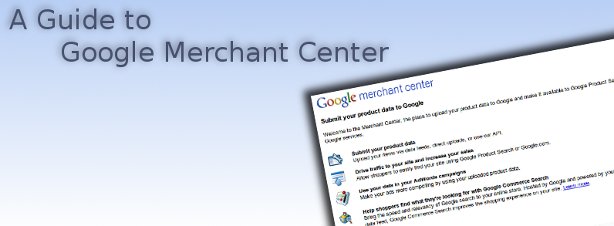
Google Merchant Center is for those who want to submit products and sell them through Google. It used to be called Google Base. Google Merchant Center is where you upload feeds, check item status, and get information about how well your listings are doing. Your products uploaded to Google Merchant Center feed the searches that other people do for products they want to buy. For example, suppose someone wants to buy some dog toys. Starting at Google’s home page and clicking on “Shopping,” they’ll see a page like in the first screen shot. After typing “dog toys” into the search box and hitting enter they’ll be taken to a listings page like the one in the second screen shot.
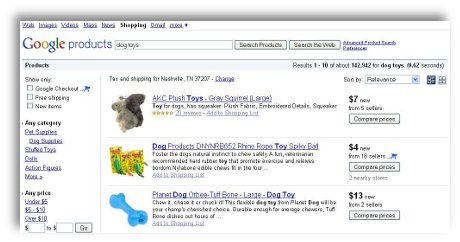
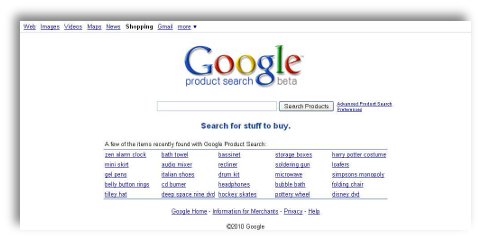
Google Base still exists, but Google Merchant Center is optimized for product listings, and it is where Google will concentrate on adding features and improving the tools needed for uploading product listings and managing them. If you already used Google Base for listing products, your existing data feeds, FTP settings, and other items will still be there. Your account will have already been transferred to the Google Merchant Center, and you will sign in using the same account you used on Google Base. For most users the transfer will be transparent. There are, however, a small fraction of users who have been uploading product listings and other items on Google Base. They will need to sign on to Google Base to create new FTP settings to be able to upload non-product feeds to Google Base.
 Google Merchant Center has a new dashboard page that contains an overview of your product listings, and feeds, and performance graphs, making them more accessible than before. There is now a blog you can visit, googlemerchantblog.blogspot.com for news and tips for using Google Merchant Center effectively.
Google Merchant Center has a new dashboard page that contains an overview of your product listings, and feeds, and performance graphs, making them more accessible than before. There is now a blog you can visit, googlemerchantblog.blogspot.com for news and tips for using Google Merchant Center effectively.
If you sell items over Google Merchant Center, the Google Checkout is the secure web application that lets you process orders, which includes tasks like charging credit cards, specifying carriers and tracking numbers, canceling or refunding orders, reviewing payout summaries, and updating Google Checkout settings.
To process orders in the Google Merchant Center, you sign in, review the order, and charge the buyer’s credit card. Google will then authorize 100% of the order amount. You are required to charge the order within seven calendar days to be guaranteed the funds. After the order is charged, you automatically initiate the payout process. You have to ship the order within a specified time frame that you agreed to when you confirmed an order so that you will be eligible for the Google Checkout Payment Guarantee. You’ll notify the buyer that their order has shipped. There are ways of automating order processing using the Google Checkout API.
If you sell services or goods that don’t need to be physically shipped, you have to mark the order “shipped” in order to send the buyer a confirmation email. Some transactions involving digital goods might not be covered under the Google Checkout Payment Guarantee policy.
In processing orders, Google uses automatic fraud risk modeling to alert them to possible fraudulent transactions. If a fraudulent transaction is detected, it is immediately cancelled. In order to protect you and other Google Merchants, active orders from the same fraudulent credit card will be cancelled. Google Merchant also uses industry sources like worldwide fraud blacklists to block fraudulent shoppers from using Google Checkout in the first place.
For example, if Google detects suspicious activity related to one of your orders, it will flag the order with “customer review in progress” status and will perform fraud detection tests on the order to keep your risk as low as possible. Google usually completes their reviews in four to six hours.
You, as a Google Merchant, are able to review credit verification information on each order you receive. You just sign in to Google Checkout, click the order in which you are interested in your “orders” box. At that time buyer credit verification information appears below the buyer’s shipping information, including whether the transaction is covered by the Payment Guarantee, the Address Verification System check, the Card Verification Value, or CVV, and Account age shows how long the buyer has been qualified to buy through Google Checkout. If you are concerned about an order, you do have the option to cancel it to avoid the risk of a fraudulent transaction.
Fees for Google Merchants vary by the dollar amount of monthly sales and are reset every month on the 5th. For monthly sales under $3,000, the fee is 2.9% + 30 cents / transaction. For sales between $3,000 and $9,999.99, the fee is 2.5% + 30 cents / transaction. For $10,000 to $99,999.99 per month, the fee is 2.2% + 30 cents / transaction, and for sales over $100,000 per month, the fees are 1.9% + 30 cents / transaction. Orders that ship to buyers in a country different from the Merchant’s country will also have an additional 1% processing fee.
If you plan to sell apps in the Android phone market, your transaction fee is 30% of the application price. In other words, if you sell your app for $10.00, your transaction fee is $3.00 and your payment will be $7.00.
Google Merchant Center is an answer to those who want to sell products through Google Products searches. This can be a real sales booster for those who have shops online at places like Etsy. Google Merchant Center is now split apart from Google Base, with the goal of making online product searches more fruitful and online sales easier for merchants and shoppers.

Google Website Optimizer is a free Google tool made to help you get better conversions on your website, whether that means signing up for your email newsletter, or buying your product or service. You test different versions of your content to determine what is going to attract the most users and get them to stick around long enough to convert. Suppose you are using click tracking and conversion tracking to try to figure out what visitors are doing when they visit your pages. Maybe you’re getting visitors a-plenty but very few buy products or subscribe to your newsletter. This is where Website Optimizer helps.
You choose what parts of a web page you want to test, whether it’s promo text, a headline, or whatever. Then Google runs an experiment on part of your site’s traffic in an attempt to figure out which content on your site is most attractive to visitors. Once Google has amassed enough data on your site’s experiment, they will send you reports and suggestions for optimizing your site.
If you’re not the webmaster or administrator, you will need that person’s help to put the experiment code onto your site to enable the optimizer to track traffic to different versions of the page. You’ll end up with two kinds of reports from Google. One is a combination report and the other is a page section report.
The combination report shows results for all page combinations that were made from the variations in page section you created when you set up your experiment. This report will show how well a particular combination does compared with the original site and other combinations. The estimated range of conversion rates gives you the main snapshot of overall performance. You’ll get the actual numbers, in case you’re into hard statistics, but you’ll also get simple bar graphs that show red for underperforming content and green for better performing content.
Google advises that website owners not make major site changes unless a large quantity of data has been collected, because the more data gathered, the more likely the results are to be accurate.
Your page section report is focused on the variations on each page section that performed best. It is possible, however, that by your simply picking the best-performing variations may not be optimal, since there may be interactions among certain variations that the algorithm cannot capture. In other words, the page section report is not a magic bullet that you can use to get rid of all the bad pages and implement all the good pages, so that suddenly your site will take off.
You’ll also get relevance ratings on each page, which tell how much impact a particular page has on the test that Google Website Optimizer is running. The higher the number for a given page, the more important that page is for getting conversions.
When you go to the Google Website Optimizer page, you’ll see something like what is in the screen shot. When you click on the “+” sign, you’ll be taken to a page where you’ll be asked what type of testing you want done: A/B testing or Multivariate Test (See second screen shot.). A/B testing is simpler and works best with new sites and sites that don’t get much traffic. The multivariate tests let you test multiple sections of a page simultaneously, such as the headline, a picture, or promotional text. In order for multivariate tests to work well, they need to be done on sites that get plenty of traffic.
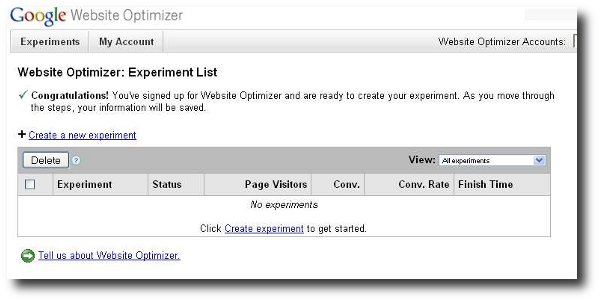
Suppose you have more than one conversion page. Google Website Optimizer tests can track more than one goal. All you do is place the conversion code from your experiment on each of your conversion pages. The caveat is, Website Optimizer only reports one conversion per visitor. Suppose you get a really enthusiastic visitor who buys something and signs up for your newsletter. Website Optimizer will only count one conversion. That way you see which test page gets the most conversions regardless of conversion type.
If you’re doing an A/B test, you’ll make different page versions. They can be totally different if you want. The Optimizer will test their performance to see which one works best. If you’re doing multivariate testing, however, you won’t be able to change the layout of the different sections on your page.
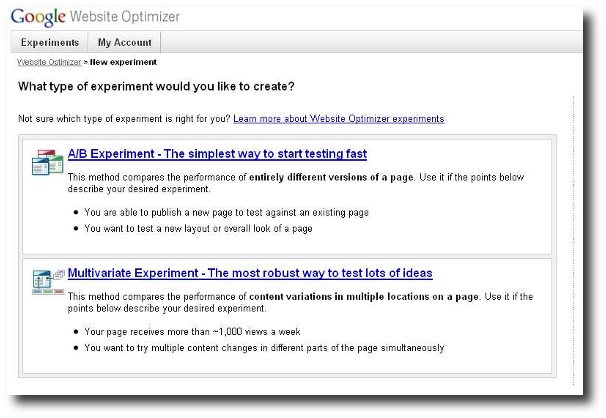
If you already use Google Analytics, you can use Analytics and the Website Optimizer together. If you have customized your tracking scripts for Google Analytics, you’ll most likely want to customize your website optimizer tracking scripts in the same manner. The help center for Google Analytics will show you how to change your Website Optimizer tracking scripts.
There are a few other things to know before using the Google Website Optimizer. For one thing, you have to set up a Google AdWords account. This does not mean that you have to create an AdWords campaign or buy advertising. It’s just that the Optimizer is part of the AdWords interface. You can set up AdWords with a few keywords and some random ad text. When you get to the part where you enter payment details, leave it empty. At this point, you’ll have an AdWords account and will be able to do Website Optimizer tests without buying AdWords ads.
With the A/B test, you are not limited to only two test versions of a page. You can test almost an unlimited number of versions at the same time. The actual number will depend on how many sites you’ve already set up Google Analytics on. All you do is specify more alternative pages when you set up the test. And though you technically can test very different web page designs at the same time, this isn’t recommended. Suppose one page clearly out-performs the other. You won’t know what caused the big change: was it a graphic? headline? something else? You won’t know what to do to other pages to get the same jump in performance. If you take the time to test one-by-one changes, you can see which changes are going to make the most difference.
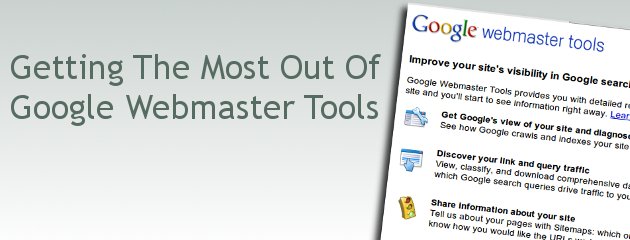
Google Webmaster Tools is a free service provided by Google to help new and experienced webmaster check on their indexing and raise the visibility of their website(s). Among the tools in Google Webmaster are those that check the crawl rate, list sites linking to the user’s site, determine what keyword searches on Google bring the user’s site into the search engine results pages (SERPs), determine click-through rates of SERP listings, show statistics on how Google indexes the user’s site, create a robots.txt file and submit sitemaps.
The range of tools offered on Google Webmaster Tools can help webmasters significantly raise their profile by search engine optimization (SEO), and traffic generation. To make Google Webmaster Tools work with your particular site, you have to install a snippet of code into your site. Google Webmaster Tools make a great partner to Google Website Optimizer as far as getting your website as prominent as possible.
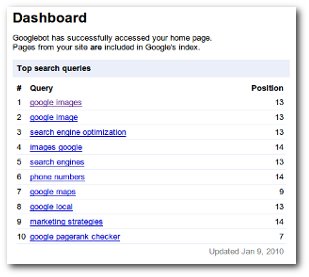 If, for example, your site has a page in which you offer your visitor some free report or software in exchange for their email address, you could use the Google Website Optimizer to test two versions of that page to see which one converts best. This lets you streamline your SEO efforts and cuts back on some of the trial and error part of it.
If, for example, your site has a page in which you offer your visitor some free report or software in exchange for their email address, you could use the Google Website Optimizer to test two versions of that page to see which one converts best. This lets you streamline your SEO efforts and cuts back on some of the trial and error part of it.
Google Webmaster tools was launched in 2006 to help webmasters create sites that are friendlier to search engines. There is also the Google Webmaster Tools Access Provider Program. It lets domain hosts use Google’s application programming interface (API) to get their customers up and running with Google Webmaster Tools.
There are many steps you can take to help Google find, rank, and index your site. They can be classified as Design and Content Guidelines, Technical Guidelines, and Quality Guidelines.
Every site needs a clear hierarchy and text links. Each page needs to be reachable from one or more static text links.
The sitemap should give visitors links to the important pages of your site.
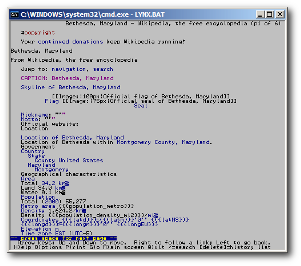 Try out a browser like Lynx to look at your site. Most search crawlers “see” your site like Lynx does. If your site is overloaded with JavaScript, session IDs, Flash, or cookies, the search crawlers may not find your site very navigable.
Try out a browser like Lynx to look at your site. Most search crawlers “see” your site like Lynx does. If your site is overloaded with JavaScript, session IDs, Flash, or cookies, the search crawlers may not find your site very navigable.Before listing the specific practices to avoid, don’t assume that just because a particular practice isn’t listed that it’s OK. If you’re using trickery like registering common misspellings of popular sites, Google might well penalize you in the search engine results pages (SERPs) or ban you altogether. Ultimately, looking for loopholes and technicalities may not serve you well.
When you believe your site is ready and follows all the design, technical, and quality guidelines (especially the latter), then you can submit it to Google at www.google.com/addurl.html. You should also use Google Webmaster Tools to submit a sitemap. A sitemap helps Google cover your webpages more effectively.
Starting up a website can be hard work, particularly if you’re new to the world of style sheets and HTML. It isn’t enough to simply create a great looking site filled with interesting content and wait for people to discover it. Particularly if you have an e-commerce site or a blog from which you want to earn money, you need to make your site as friendly as possible to search engines. Google Webmaster Tools are specifically for this purpose: getting your website the notice that it deserves.
While it may be tempting to take shortcuts like buying a bunch of back links, it can be bad for your site in the long run. The best way to build your site’s following is to submit a sitemap, and follow the guidelines listed above for proper ways to promote your site. And, of course, the ultimate “tool” for getting your site popular and keeping it popular is to provide fresh, rich content on a regular basis.

Statistics from early 2009 claimed that iPhone users accounted for some two-thirds of all mobile browsers. Now, while that particular statistic has been questioned and debated, there is little doubt about the effect of the iPhone on mobile browsing. The advent of the Google Android phone will only make mobile web surfing more mainstream than it already is. When it comes to optimizing your web content for Google Mobile Search, there are a number of things you can do.
Some people say that you should make a mobile version of your regular website, while other say that you should optimize your existing site for mobile browsing. But whether it’s your normal site optimized for mobile, or a new mobile version of your site, there are steps that anyone wanting to rank high in mobile search results should do.
 Step one is to make sure that your website is mobile compliant. This means that your pages are formatted for people browsing the web with their phones. Mobile browsing implies a lack of time to complete a search. Perhaps instead of mobile “browsing,” the term should be something more like mobile “hunting.” But since mobile users are also short on screen space, the pages should be designed to cater to this reality. Do you know what your site looks like on a mobile web platform? If not, do a mobile search to see. You’ll notice that a lot of your site’s goodies are unavailable. But this makes some choices all the more obvious.
Step one is to make sure that your website is mobile compliant. This means that your pages are formatted for people browsing the web with their phones. Mobile browsing implies a lack of time to complete a search. Perhaps instead of mobile “browsing,” the term should be something more like mobile “hunting.” But since mobile users are also short on screen space, the pages should be designed to cater to this reality. Do you know what your site looks like on a mobile web platform? If not, do a mobile search to see. You’ll notice that a lot of your site’s goodies are unavailable. But this makes some choices all the more obvious.
If these things don’t check out, then you need to make some changes to get your site ready for what many experts see as the coming tsunami of mobile searching.
Why should you go to the trouble? The current industries seeing the most growth in mobile searches are business, entertainment, and travel. According to the Mobile Optimization Association, mobile searchers tend to be young, high income professionals with promising careers, or, to put it more bluntly, people with more disposable income than usual.
Web pages for mobile browsing are created in XHTML or WML. They must be W3C compliant. W3C stands for “World Wide Web Consortium” and sets guidelines about how a web page should be structured. They publish best practice design principles for webmasters. Without going into the nuts and bolts of getting your site to be W3C compliant, you should know that there is a W3C Code Validator at http://validator.w3.org/ that anyone can use to ensure that your site renders on all the major browsers and platforms in a similar manner.
Before deciding exactly how to optimize your site for mobile, there are a few things to know about the people who use mobile browsers. First of all, they tend to use the same search engine on their mobile device as they use on their PC. Even though there are 234 million wireless subscribers in the U.S., only 10% use mobile search (which is still 23 million people). Adoption rates of mobile browsing are much higher in Europe. Finally, mobile searchers are goal-oriented: they want to get the info and get out. They don’t tend to browse or surf.
A few general practices for optimizing your site are:
There are two main opinions when it comes to optimizing your site for Google Mobile: 1) Optimize your existing site; and 2) Create a new mobile-only site. Both approaches have their advantages and disadvantages, which we’ll go into next.
If you want to optimize your existing site, make sure that in mobile search your pages are independent of device. Search results on mobile devices use a different data set than web browsers do.
Use external CSS style sheets because they limit how much code has to be downloaded and are helpful in scaling up or down for different screen sizes. You can have a separate style sheet for hand held devices.
Use text links rather than images. Images may not download at all and will increase page loading times. Here are a few do’s and don’ts for optimizing an existing site for mobile search.
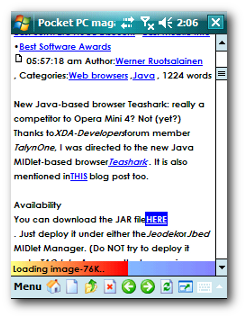
The argument for doing this is that mobile users are goal oriented rather than simply browsing. Some sites have taken to using a subdomain approach rather than using a separate domain like .mobi. That would give your mobile site a name like mobile.yourdomainname.com. It allows you to retain the “brand” of the top level domain rather than having to rebuild branding for a new domain name. Here are some tips for optimizing a mobile-only version of your site.

If you have ever used Google Image Search then you are already indirectly familiar with search engine optimization for images. You type in “stainless steel gardening fork” to Google Image Search, and you get a page full of pictures of stainless steel gardening forks. There are a number of reasons to optimize your website for Google Image Search.
The main reason is that Google Image Searches can bring your site a lot of traffic, particularly if your image shows up on the first page of results and is heavily searched. So, having your site on the first page for “stainless steel gardening fork” won’t get you the boost in traffic that, say, a first page hit on “world cup 2010” would. In fact there are some sites get most of their traffic through Google Image Search.
A second reason to optimize your page for Google Images is that it helps to define the overall look and feel of your page. Optimization helps you rank higher in regular search engine rankings and display more relevant AdSense ads if you participate in AdSense. Optimizing involves arranging things so that the Google Image Bot can easily interpret what your site is all about, since it can’t “see” your images.
It is important to note that the Google Image Bot crawls the web to index images like the regular Google Bot indexes pages. The Google Image Bot is slower, however, and doesn’t visit sites as frequently as the regular Google Bot indexes sites. It could take as long as one year for the Image Bot to visit your site, which means that optimizing a site for Google Images takes a long time.
But it’s still worth it. Go ahead and optimize your site for Google Images so that when that Image Bot finally does pay a visit, you’ll have the best chance of ranking high in the Image Search results. Once you look in your server logs and see “images.google.com,” you’ll know that your site has been indexed for Google Images.
To help make your visit from the Image Bot go as well as possible, you need to know that it relies on several factors to figure out what an image is about. Those factors include: the file name, the alt text, the surrounding text, the page title, the page theme, and links. The alt text and file name are the most important in the Bot’s determination of what an image is about.
 The alt text is what shows up when you hover your mouse over an image. In your image code, you use this bit of html:
The alt text is what shows up when you hover your mouse over an image. In your image code, you use this bit of html:
<img src=”filename.gif” alt=”Alternative description goes here“>
You should be descriptive, but you don’t have to go overboard with it. Choose a description that represents what you would be searching on if you were looking for that image. Leave out words like “the, or, and, are, we” and similar ones. They’ll do little but take up space that better descriptors could be using. In other words, you should use something like “horseshoe crab Seabrook Island South Carolina” rather than “the horseshoe crab I found that time.”
The same principle applies to your image file name. Don’t call it pic081204.jpg. Call it horseshoecrabseabrook.jpg. Keep the file name either the same as or similar to the alt text. Cramming different keywords into the alt text and file name will not help you rank higher. It will only confuse the Image Bot.
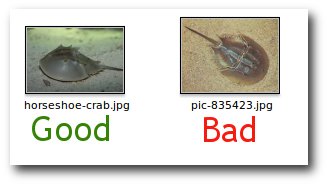
The path to your image should be logically themed as well. It should be something like “mydomain.com/images/animals/horseshoecrabseabrook.jpg” rather than “mydomain.com/stuff/awesome/horseshoecrabseabrook.jpg“. On your page, if you put a paragraph of descriptive text just above and just below your image, and the text contains the key phrase from your alt text and image name, you have a much better chance of your image being indexed well.
If you can (and sometimes you just can’t), put your keywords into your page title and your page meta description. The more consistent the data that Google gets concerning your image, the better the indexing will be. This applies to your regular page optimization as well as that for images, and it will also result in more pertinent Adsense ads if you participate in AdSense.
When it comes to images and to your site’s pages in general it’s best to keep every page relevant to its own theme. In other words, leave your images and text about wildlife photography techniques on its own page rather than mixed in with your image and description of the horseshoe crab.
If you have a page for each topic and optimize each page, you can then use the trick of placing Adsense ads on the page to see if Google “gets” what your page is all about. Even if you don’t want to participate in AdSense, you can try this as an indicator of what your site is perceived by Google as being about.
As with your regular pages, back links help your image rank higher as long as they were obtained in an organic and honest manner. If you use text links with anchor text, use your key phrase as the anchor. In other words “click here to see horseshoe crab from Seabrook” is much better than “click here to look at a cool picture I took”. And, as usual, the more descriptive your URL, the better.
One final tip is to be aware that Google wants to provide unique content in image form just as it does with web pages. To do this it tries to match up the image file size, dimensions of the image in pixels x pixels format, and the image file name. Therefore, if you get an image from another site (with permission of course), you should alter the file name, file type, file size, or image dimensions so that Google doesn’t flag it as duplicate content. As you can see in the screen shot, all these front page results are different.
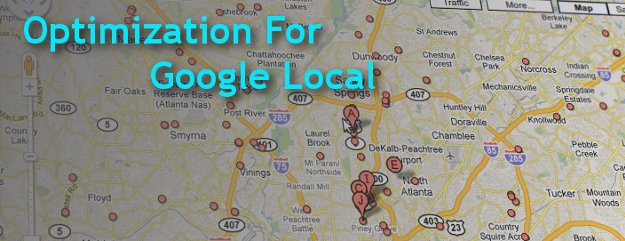
Former U.S. Representative Tip O’Neill’s famous quote that “All politics is local” can in some cases be applied to internet searches. What it means is, never lose touch with your constituents, or in the case of a business, your customers. If you have a bricks and mortar business and don’t sell online, then in your case, “all search engine optimization is local.” Local customers often search for local listings, whether for simply the phone number, store hours, or just to find out more about local businesses. If you don’t optimize your site for local searches, you could be losing more business than you think.
Google Local Business listings usually only show up when the user types in a category of business and a city. When that happens, Google Maps shows up along with anything up to 10 URLs listed next to their phone numbers. You don’t want your competitors to show up on that map with their phone numbers if you aren’t showing up there. If you are, for example, a cosmetic dentist in Atlanta, you want local people to find your practice in as many ways as possible: from offline ads, yellow pages, or online searches.
Look at the screen shot for this very search, “cosmetic dentists atlanta.” As you can see, several practices are listed, their locations are shown on a map, and their phone numbers are right there. There are plenty of things you can do as a business owner to get local people to find your website and your actual business. For one thing, you can ask for back links to your business from other prominent sites.
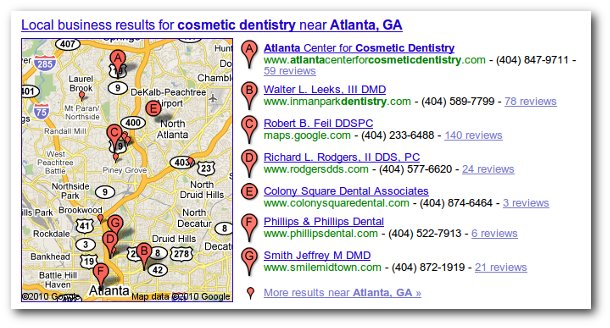
For an example in keeping with the cosmetic dentists in Atlanta theme, suppose you, the cosmetic dentist, were to type in “cosmetic surgery atlanta.” You’d get a page like this second screen shot. Suddenly you see, in this case, seven local cosmetic surgery practices from whom you could possibly solicit back links and offer your own back link to their site. Back links aren’t everything, but they are important in the world of search engine results.
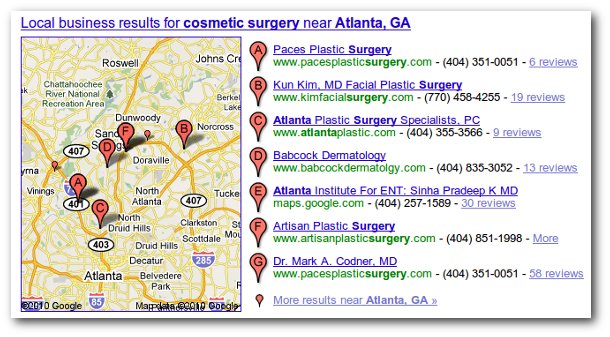
List your business and website in as many free online directories as possible. There is evidence that Google may use your business’s phone number to boost your local ranking, so any time you write a description of your business on a third party site, include the phone number. Also, make sure that all your business listings are as complete and consistent as possible.
If you can include images, coupons, or even a video along with the basic name, address, phone number, and business hours information, so much the better. Use good keywords in your directory listings too. For example, in this instance, good keywords might include “veneers, laser whitening, dental makeover” while the keyword “teeth” would be too broad and vague to help you much.
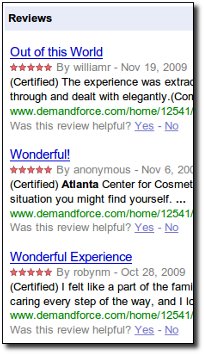 And there’s nothing wrong with looking at those local businesses that rank at the top and looking at what they’re doing in their local listings. They may be doing something you hadn’t thought of, like offering a coupon on their website. Another important factor in optimizing your site and listings for Google Local is customer reviews. Put a link from your site’s home page to a directory listing and encourage customers to review your business. The more reviews you get, the better.
And there’s nothing wrong with looking at those local businesses that rank at the top and looking at what they’re doing in their local listings. They may be doing something you hadn’t thought of, like offering a coupon on their website. Another important factor in optimizing your site and listings for Google Local is customer reviews. Put a link from your site’s home page to a directory listing and encourage customers to review your business. The more reviews you get, the better.
In your website itself, include your business name in the title tags, description, and content. Make sure that your site contains the address and phone number on every page as well as city and state in content, titles, headers, and descriptions.
Claim and verify your business in the Google Local Business Center, and ensure that the information is correct in data providers like YellowPages, Localize, Acxiom, and InfoUSA. These data providers supply many online business directories. If your business has recently moved or changed its phone number, make sure inconsistencies in all listings are fixed. You want all your listings to contain the correct and up-to-date information about your business.
Be sure to claim and verify your listing in directories. You would be surprised how many businesses don’t do this. Gain the upper hand by getting there first. Proper categorization of your business in Google Maps can make an enormous difference to the success of your local business listing. Make the mandatory category describe accurately what your business does. Reserve a few of the fields for custom categories that might be unique to your business. Keep your categories from overlapping to get the most mileage from them, and keep categorizing consistent in directory listings and anywhere else on the web such information is found.
With Google Maps, the description field should state what it is that sets your business apart and makes it the one people should trust. You only have 200 characters in which to do this, so you have to be brief: do you have a patent on a technique you use? is your business the oldest of its kind in town? Capitalize on what sets you apart.
You are allowed to add 10 images and 5 videos to your listing, and you should take advantage of this. Pictures that work well for your listing are your business logo, brands you carry, pictures of your business, and logos or badges of associations you belong to, like the local chamber of commerce or the Better Business Bureau. You can even include videos of your commercials or interviews you may have done on local television!
Put your business’s name out there on as many internet yellow page (IYP) sites, niche directories, local business directories and other trusted sites as possible. Mentions of your business information on several places on the web will help optimize your Google Local listing. If you haven’t taken these steps toward optimizing your Google Local listing, take the time to do so. Chances are you’ll see a real improvement in both web and real-world traffic to your business.